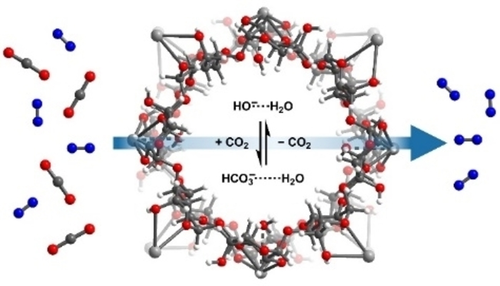Carbon Dioxide Capture at Nucleophilic Hydroxide Sites in Oxidation-Resistant Cyclodextrin-Based Metal-Organic Frameworks
-
Authors :
Mary E. Zick, Suzi M. Pugh, Jung-Hoon Lee, Alexander C. Forse, and Phillip J. Milner
-
Journal :
Angewandte Chemie International Edition
-
Vol :
61
-
Page :
e202206718
-
Year :
2022

Abstract
Carbon capture and sequestration (CCS) from industrial point sources and direct air capture are necessary to combat global climate change. A particular challenge faced by amine-based sorbents—the current leading technology—is poor stability towards O2. Here, we demonstrate that CO2 chemisorption in γ-cylodextrin-based metal–organic frameworks (CD-MOFs) occurs via HCO3− formation at nucleophilic OH− sites within the framework pores, rather than via previously proposed pathways. The new framework KHCO3 CD-MOF possesses rapid and high-capacity CO2 uptake, good thermal, oxidative, and cycling stabilities, and selective CO2 capture under mixed gas conditions. Because of its low cost and performance under realistic conditions, KHCO3 CD-MOF is a promising new platform for CCS. More broadly, our work demonstrates that the encapsulation of reactive OH− sites within a porous framework represents a potentially general strategy for the design of oxidation-resistant adsorbents for CO2 capture.
















